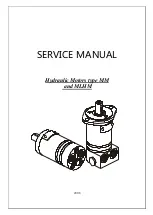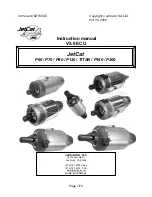
Engine Model:
Briggs & Stratton
Classic,
450 and 500 Series
Page
13 of 32 B&S Classic, 450 and 500 Series Selfhelp
Guide 2011, Issue 1.0
Add a tablespoon of fuel directly into the
carburettor ventury.
Without priming the engine again
Immediately try to start the machine.
The engine should start because you have
forced fuel through into the cylinder. Once
started allow the engine to run for about 30
seconds. Then stop the engine and refit the
air filter assembly.
Never cut grass with the air filter assembly
removed
Stale fuel or
build-ups in
the fuel tank
are most
common
when the
mower has
been stored
for a period
of time (e.g.
over the
winter
period)
We advise that the engine should be drained of fuel before storage
for more than 30 days. One should only buy fuel in quantities that
can be used up within a few weeks.
When emptying the fuel from the engine place the mower on a
solid surface, or patch of gravel or similar (fuel spillage may kill
the lawn or stain a patio):
iii. Remove the grassbox, remove the fuel cap and tip the mower
BACKWARDS to drain as much of the fuel as possible.
iv. For the fuel which remains in the tank, carefully dip a clean rag
into the fuel tank (do not force it in as you could damage the fuel
pick up pipe). Allow the fuel to soak into the rag remove it.
Repeat this until the old fuel is removed. Arrange safe disposal of
fuel-soaked rags.
v. Fill the tank
with new fresh unleaded fuel.
Remove the spark plug from the engine and clean it. Whilst the plug is removed,
prime the engine 10 times, hold the OPC lever in to the main handle and pull the
recoil rope 6 times. This will eject any residue of fuel from within the cylinder head.
Refit the spark plug and then only prime the engine once before attempting to start
the engine.
NOTE: Fuel that has become contaminated will prevent these engines from
starting. Contamination can include water from either condensation or from
water that has somehow got into the storage tanks at the garage. A service
dealer may be required to clear this.
Please dispose of old fuel and used engine oil in a manner that is compatible
with the environment














































